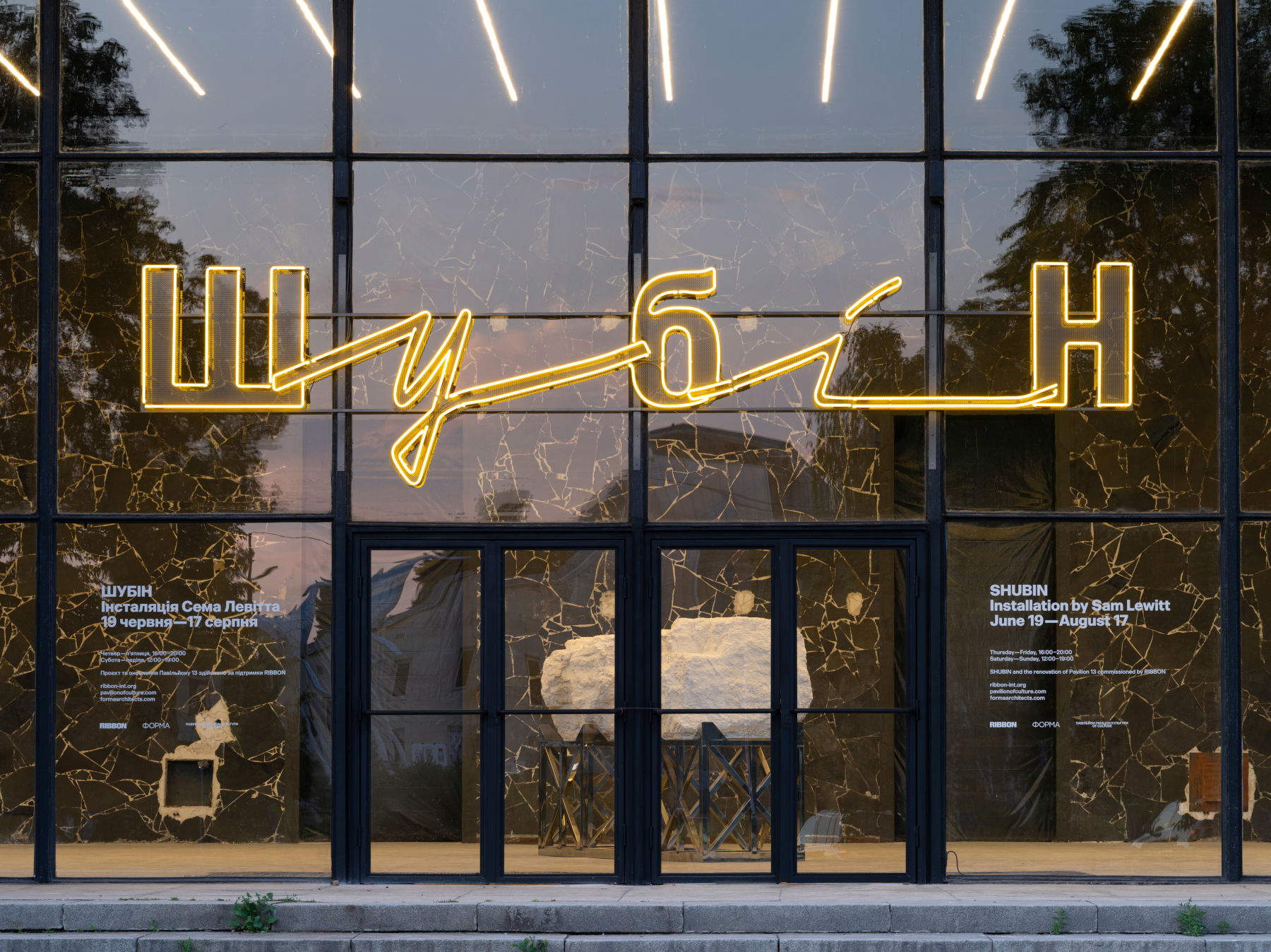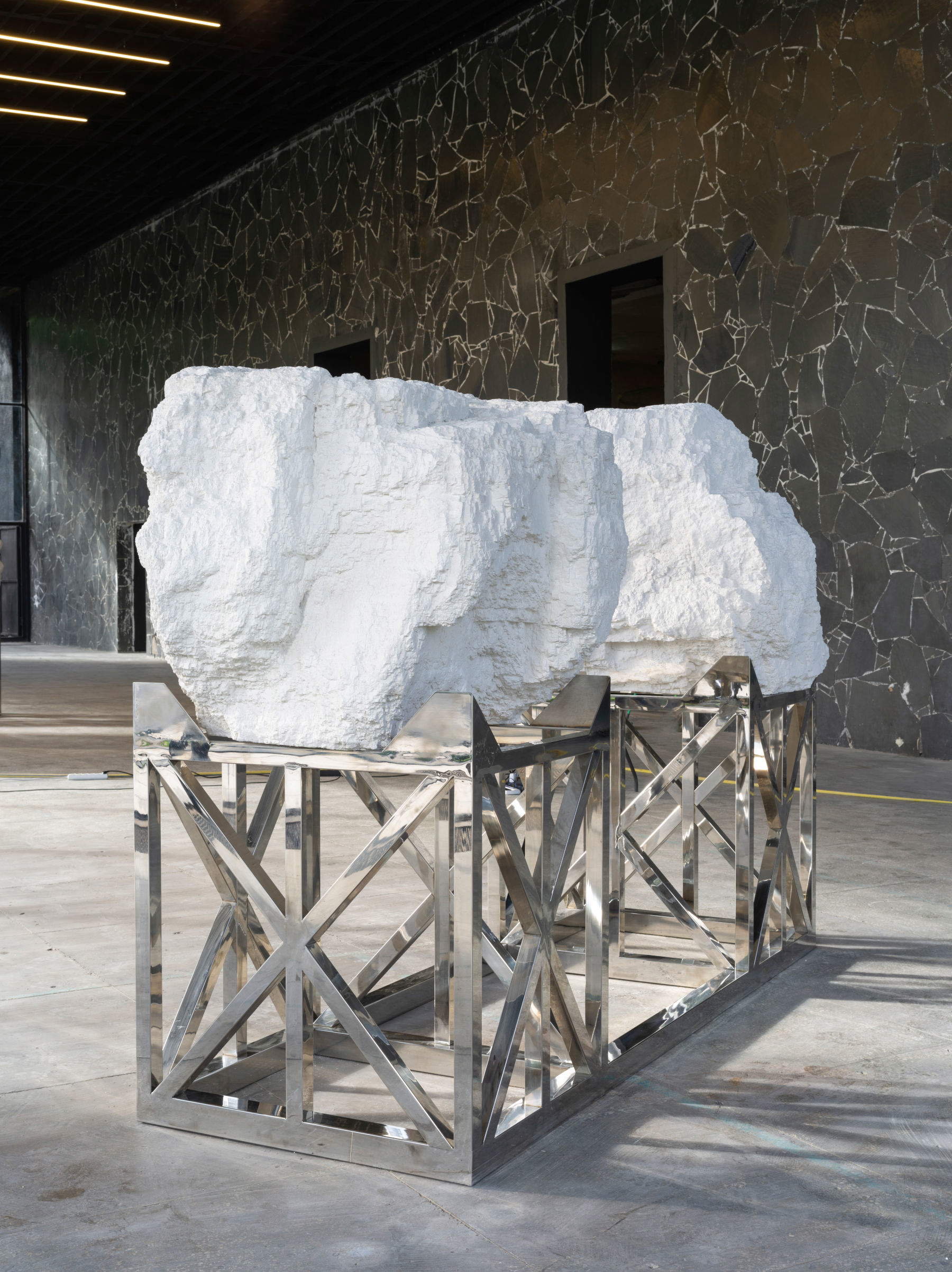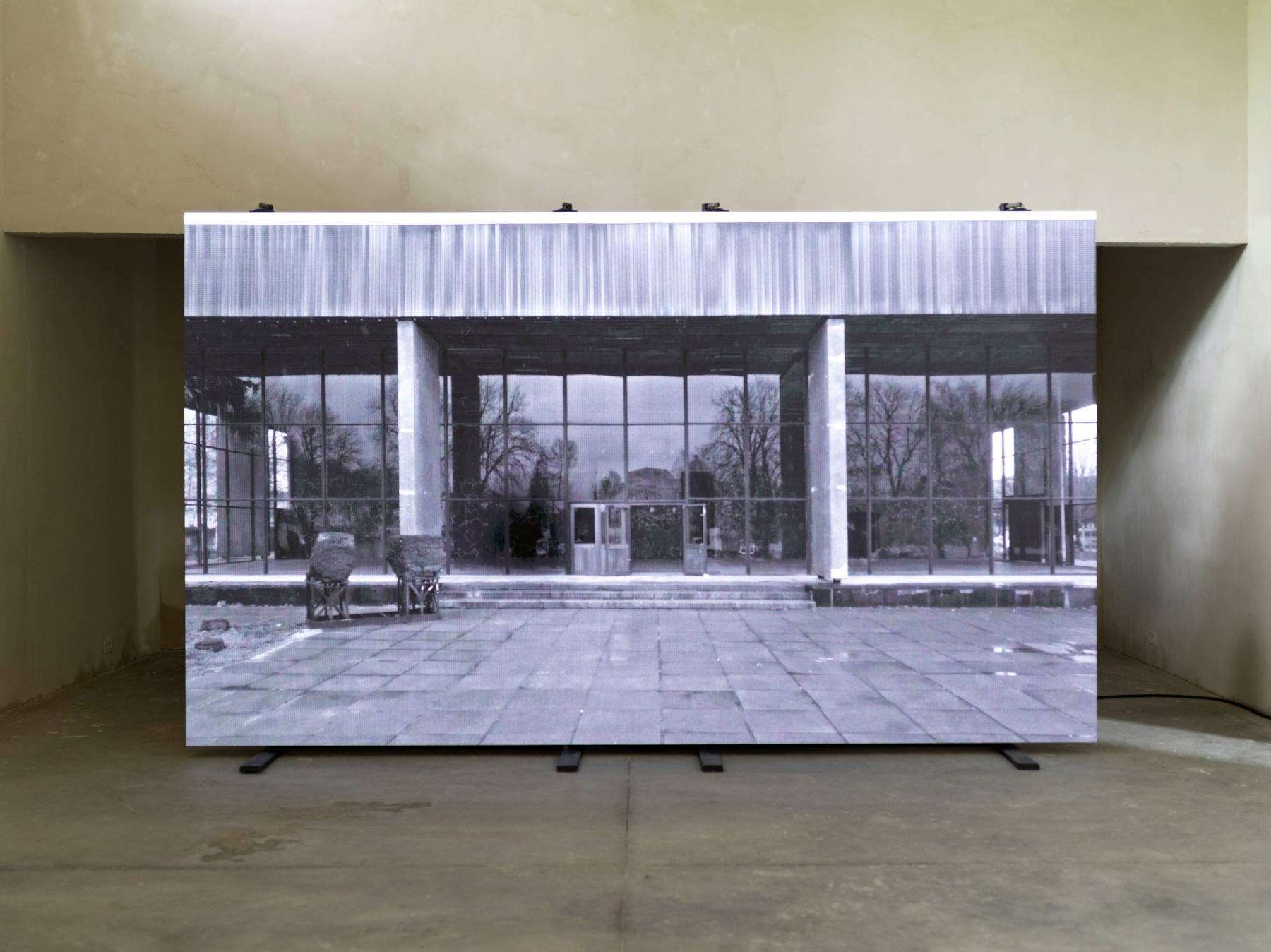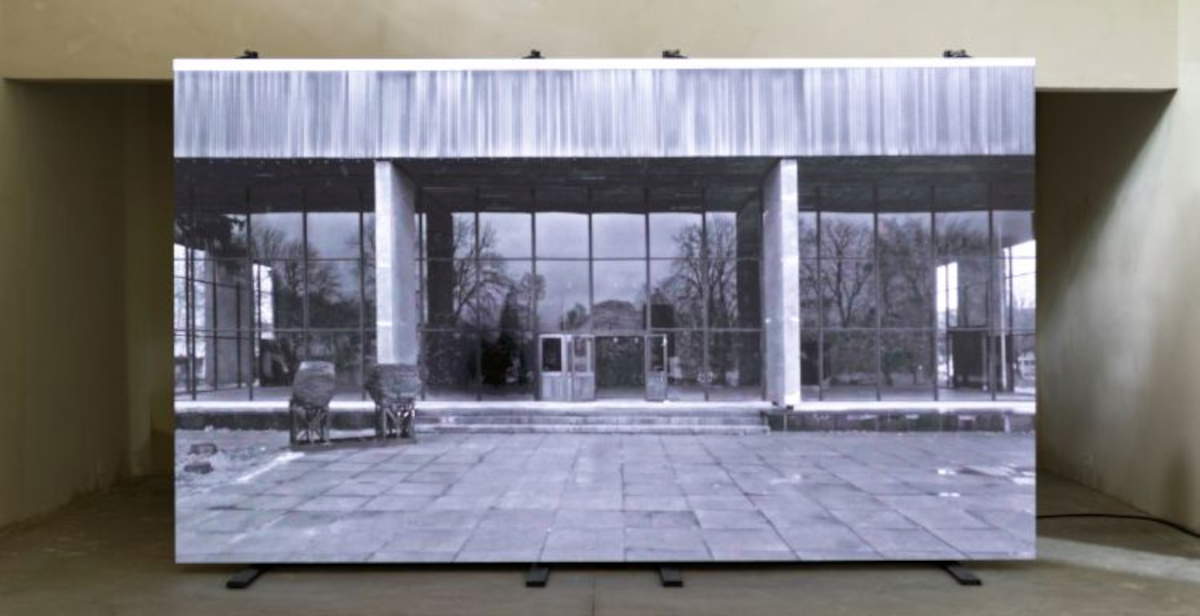In Kyiv, Ukraine, Pavilion 13 reopens its doors with a new identity: from a former industrial pavilion dedicated to coal mining in Soviet times, it is now transformed into a contemporary art center. Inaugurating this new phase is a site responsive project by U.S. artist Sam Lewitt (Los Angeles, 1981), entitled Шубін (SHUBIN). The intervention marks the result of a multi-year dialogue between the artist and the architectural firm ФОРМА (FORMA), which oversaw the renovation of the space.
Lewitt’s work confronts the historical and symbolic significance of the building, addressing the links between resources and representation, between the display of an industrial identity and its slow transformation into cultural testimony. Pavilion 13, built to pay homage to the Ukrainian mining industry, is now treated by the artist as both a stage and a protagonist in a project that combines custom signage, sculptures, a video work, and a summer public program co-curated by Lewitt himself.

The title Шубін (SHUBIN) refers to a mythological figure from the mining culture of eastern Ukraine. Shubin is an ambiguous spirit: sometimes protective, sometimes hostile, depending on the narratives. He wears a fur coat, shuba in Russian, and embodies both the soul of the miner and that of the mine owner, always bound to the unstable fate of the underground. In this context, the name also suggests the absent presence of the spectator who, with the changing economic landscape and Ukraine’s integration into global commodity supply chains, has abandoned the industrial narrative celebrated in the pavilion. At the same time, Shubin could point to the artist himself, involved in a self-critical reflection on the local histories he traverses.
The entire installation takes shape from a play of lights, natural, artificial, reflected, mineralized, that accompanies the viewer inside the pavilion. The journey begins already at the entrance, with a neon sign made by Lewitt inspired by the typeface Rublena, known to be one of the most widely used in Soviet times. The visual effect recalls the original aesthetic of the building opened in 1967, with an explicit reference to its function as a propaganda showcase. The diffused light from the sign is refracted on polished steel and plaster surfaces that make up a reproduction of an old coal and iron display, placed outside the building since its opening.

Inside, the audience is guided by a looping video projected on a large-format LED screen. The film takes the viewer on a virtual flight through the pavilion’s architecture: one enters from the façade, traverses the interior spaces, and returns to the exterior, with one stop along the way. The sequence is accompanied by a layered soundtrack composed of a series of voices discussing the material intertwining of coal, steel, neon, and semiconductors-the materials that make possible the very production and transmission of the digital image. The commercial screen used for projection thus becomes an integral part of the installation, problematizing the visual transparency attributed to modernist architecture and introducing a new kind of internal luminosity, linked to the technical processing of minerals.
With this work, Lewitt interrogates conceptual foundations. Mining, from an industrial function, here becomes a metaphor for the act of display itself: to make visible, to bring to the surface, but also to select, isolate, transform. Pavilion 13 is treated as a layered organism, where each element, from building materials to socioeconomic history, is interrogated in terms of visibility, function, and memory.

Enriching the project is a series of talks and screenings entitled SHUBIN Talks, co-organized with curator Maria Noschenko and editor Katia Khimei. The program involves artists, scholars, miners, and engineers, and critically addresses issues of resource extraction and its representation, in Ukraine and elsewhere. It is a discursive extension of the work, reflecting a desire to keep open a process of collective and transdisciplinary interpretation. The renovation of the building was overseen by Iryna Miroshnykova and Oleksii Petrov, partners in the ФОРМА studio and co-founders of the Ukrainian cultural institution Pavilion of Culture, together with Sasha Andrusyk, Lizaveta German, Maria Lanko, Olga Balashova, and Victor Glushchenko. The collaboration between architects, curators, and artists enabled the reactivation of a symbolically complex space, restoring it to an active role in critical reflection on the transformations taking place in contemporary Ukrainian society.
Sam Lewitt (Los Angeles, 1981) lives and works in Berlin. He has presented solo exhibitions in venues such as Miguel Abreu Gallery (New York), Galerie Buchholz (Germany), Z33 House of Contemporary Art (Belgium), Swiss Institute / Contemporary Art (New York), Kunsthalle Basel (Switzerland) and CCA Wattis Institute for Contemporary Art (San Francisco). His work has been included in numerous international group exhibitions, including the Dunkirk Triennial of Contemporary Art and Industry (France), MoMA New York, Centre Pompidou Paris, 57th Venice Biennale, Vienna Secession, Kunsthall Bergen (Norway), La Panacée (France) and the 2012 Whitney Biennial (New York), among others.
Open Thursday and Friday from 4 to 8 p.m.
Saturday and Sunday from noon to 7 p.m.
 |
| At Kyiv Pavilion 13 reopens with Шубін, the new site responsive project by artist Sam Lewitt |
Warning: the translation into English of the original Italian article was created using automatic tools. We undertake to review all articles, but we do not guarantee the total absence of inaccuracies in the translation due to the program. You can find the original by clicking on the ITA button. If you find any mistake,please contact us.